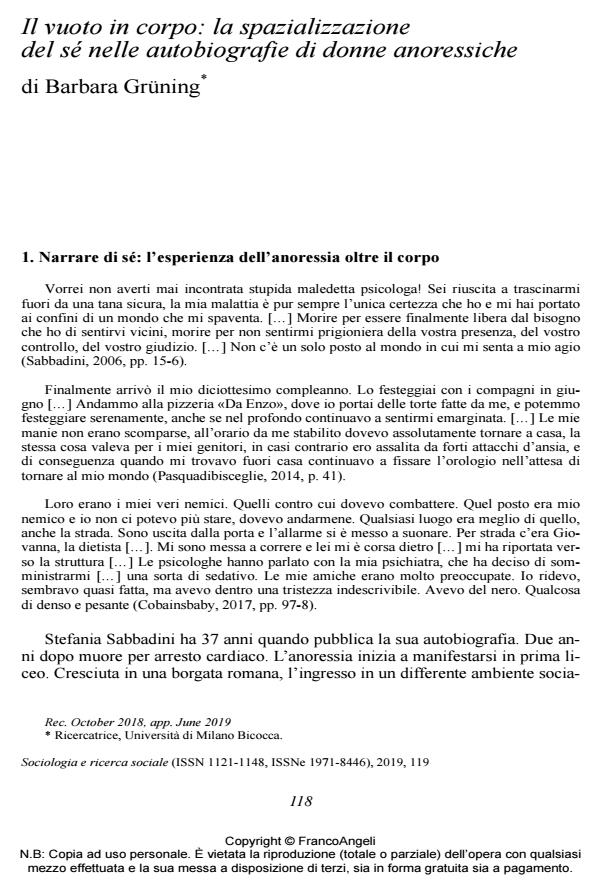Il vuoto in corpo: la spazializzazione del sé nelle autobiografie di donne anoressiche
Journal title SOCIOLOGIA E RICERCA SOCIALE
Author/s Barbara Grüning
Publishing Year 2019 Issue 2019/119
Language Italian Pages 22 P. 118-139 File size 191 KB
DOI 10.3280/SR2019-119006
DOI is like a bar code for intellectual property: to have more infomation
click here
Below, you can see the article first page
If you want to buy this article in PDF format, you can do it, following the instructions to buy download credits

FrancoAngeli is member of Publishers International Linking Association, Inc (PILA), a not-for-profit association which run the CrossRef service enabling links to and from online scholarly content.
This essay focuses on the spatial perceptions of the body presented in twenty- one autobiographical narratives by Italian women who experienced anorexia or bulimia in the last three decades. The goal is not to present a picture of the social etiology of anorexia in Italy, but to highlight the importance of space as an analytic tool for understanding how anorexic women experience and construct their body and subjectivity in interaction with other social actors within spatialized social structures. The author proposes a sociological-phenomenological approach to thinking about anorexia spatially, starting from a multilayer understanding of space as material, social, symbolic and relational dimensions.
Keywords: Empty Bodies. The spatialization of Self in the autobiographies of anorexic women
Barbara Grüning, Il vuoto in corpo: la spazializzazione del sé nelle autobiografie di donne anoressiche in "SOCIOLOGIA E RICERCA SOCIALE " 119/2019, pp 118-139, DOI: 10.3280/SR2019-119006